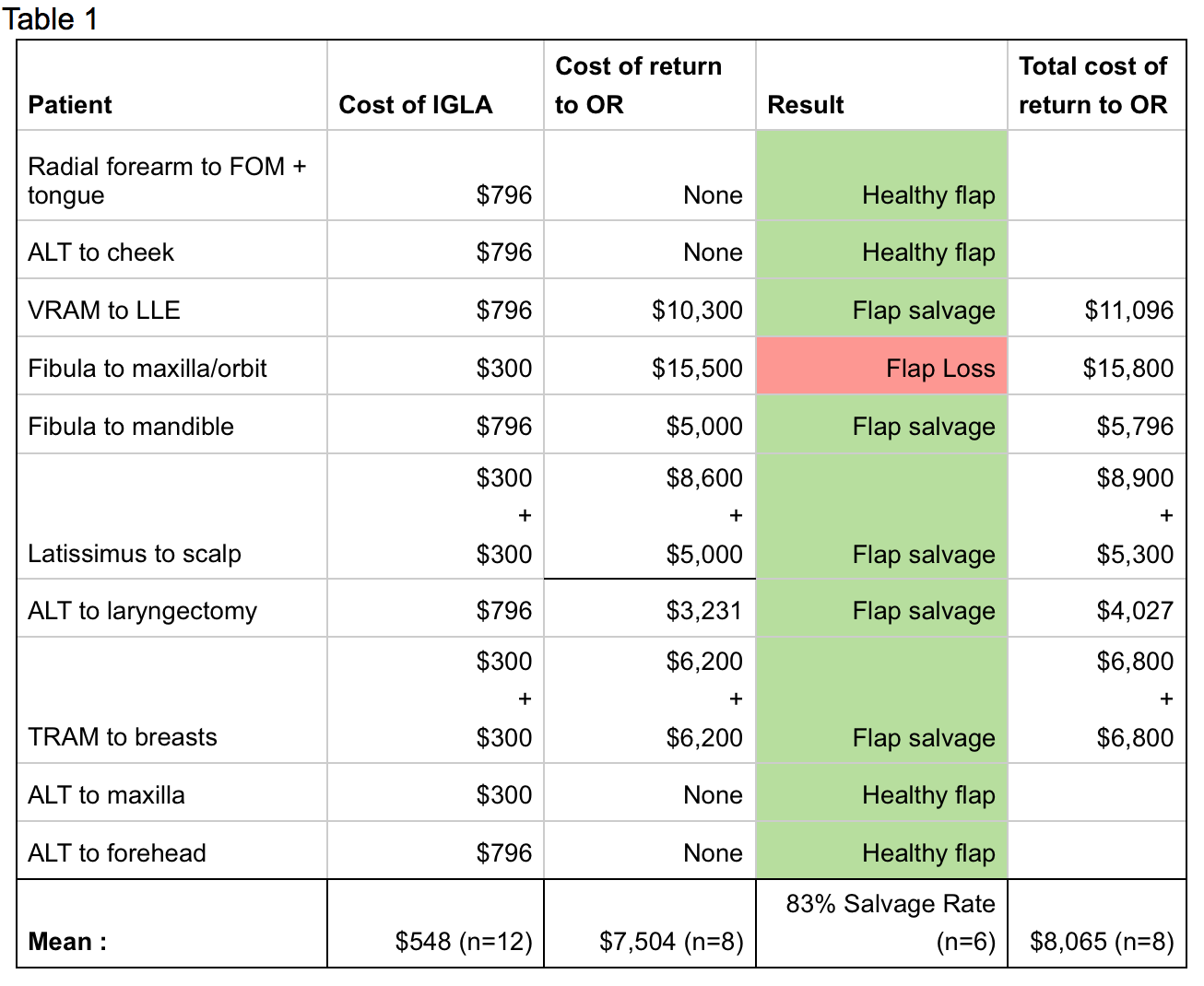Cost Effectiveness of Indocyanine Green Laser Angiography in Postoperative Monitoring of Free Flaps
David W. Nash, MD, George Kamel, MD, Katie Weichman, MD, Evan S. Garfein, MD.
Montefiore Medical Center, New York, NY, USA.
BACKGROUND: The most feared complication of free microsurgical tissue transfer is flap loss. Free flap success rates are in excess of 95%, however operative salvage attempts are as high as 25%. Re-operation is costly to the patient and the institution. This study aims to determine if Indocyanine Green Laser Angiography (IGLA), one flap monitoring method, is cost-effective in preventing unnecessary re-operations.
METHODS: This retrospective chart review includes patients who underwent free tissue transfer and had questionable flap viability between 2014-2017. Patients that underwent bedside IGLA evaluation were included and divided into two cohorts: those who returned to the OR and those who did not. Patients were analyzed based on demographic information, flap type, postoperative day, and ultimate outcomes. Cost effectiveness was also evaluated with the use of usual hospital charges.
RESULTS: Ten patients met inclusion criteria. 40% of patients (n=4) did not require re-exploration (100% viability). 60% (n=6) of patients required exploration based on IGLA evaluation (83% survival rate - Table 1) however, two of these patients returned to the OR twice. The mean cost for IGLA use prior to potential re-exploration was $548 (SD $259) and return to the operating room was $7,504 (SD $3,912). When IGLA use prevented an unnecessary re-operation it reduced cost by $6,956 (-93%). However, when IGLA confirmed the necessity of returning to the OR its added cost was an additional $561 (+7%). Therefore, the net cost of using IGLA was a savings of $2,446 in this cohort.
CONCLUSIONS:
In this series the use of IGLA prior to free flap operative exploration can reduce unnecessary take-backs by 40% with no increase risk for flap loss. It reduced overall cost by an average of $6,956 (93%). 
Back to 2018 Posters




